- Home
- Ellen Datlow
The Dark
The Dark Read online
The author and publisher have provided this e-book to you without Digital Rights Management software (DRM) applied so that you can enjoy reading it on your personal devices. This e-book is for your personal use only. You may not print or post this e-book, or make this e-book publicly available in any way. You may not copy, reproduce or upload this e-book, other than to read it on one of your personal devices.
Copyright infringement is against the law. If you believe the copy of this e-book you are reading infringes on the author’s copyright, please notify the publisher at: us.macmillanusa.com/piracy.
For Lori
ACKNOWLEDGMENTS
I would like to thank Kelli Bickman, Neil Gaiman, Merrilee Heifetz, and Ginger Clark for their work, and especially James Frenkel for his faith in the anthology.
Table of Contents
Title Page
Tor Copyright Notice
ACKNOWLEDGMENTS
INTRODUCTION
THE TRENTINO KID
THE GHOST OF THE CLOCK
I
II
III
ONE THING ABOUT THE NIGHT
THE SILENCE OF THE FALLING STARS
THE DEAD GHOST
SEVEN SISTERS
I
II
III
IV
SUBWAY
DOCTOR HOOD
AN AMICABLE DIVORCE
FEELING REMAINS
THE GALLOWS NECKLACE
BROWNIE, AND ME
VELOCITY
LIMBO
THE HORTLAK
DANCING MEN
I
II
III
IV
COPYRIGHT ACKNOWLEDGMENTS
EDITED BY ELLEN DATLOW
“Something New and Disturbing.”*
ABOUT THE EDITOR
Copyright Page
INTRODUCTION
ARE YOU AFRAID of the dark? We tend to think that ghosts and hauntings are most active then. That’s when you can be most frightened by unrecognizable sounds, smells, touches. But this is not always the case—occasionally a ghost comes out in the bright light of the day to exact revenge (justified or not), or to take care of unfinished business that was interrupted by violent death, or because he or she is prevented from resting by the living. But whether taking place in the night or in the bright light of day, ghost stories touch us powerfully precisely because they deal with that unknown province we are born to fear.
None of us—unless one believes the stories of those who have somehow been briefly dead because of a freakish circumstance that stops their heart, only to have it start again after a short interval—can really know what happens after we die. Many religious traditions claim we have souls, and who are we, the not-yet-dead, to argue? If we do, then perhaps we are virtually challenged to argue that there are ghosts, vestiges of ourselves. And how very compelling, how tempting, how delicious or painfully conceivable the possibility seems that the unfinished business of the living might be taken up by the newly, uncomfortably, or angry dead.
Ghost stories have been a popular and powerful tradition in fiction for centuries, beginning with Homer, the Augustan poets Virgil and Ovid, and Pliny. The ghost story, never restricted to the province of writers associated with the supernatural, has inspired writers of many literary traditions, including such luminaries as William Faulkner, Edith Wharton, Oscar Wilde, Kate Chopin, Muriel Spark, and John Masefield.
From the ghost of Hamlet’s father, and Banquo’s ghost’s unexpected dinner appearance in Macbeth, through disturbing hauntings as in the classic novella The Turn of the Screw by Henry James, Faulkner’s “A Rose for Emily,” and short stories by M. R. James, up to eerie imaginings such as Graham Greene’s terrifying “A Little Place Off the Edgware Road,” Robert Aickman’s disturbing short stories, and The Haunting of Hill House by Shirley Jackson, ghost stories have continued to maintain their hold on the literary imagination. Although ghost stories fell out of fashion during the 1980s (with exceptions such as Peter Straub’s Ghost Story), with horror moving toward the psychological and more realistic terror tales of serial killers and dysfunctional families, there is no doubt that ghost stories have made a comeback. I think this is because when done well, they are frightening. They’re about something we humans cannot avoid—death.
As readers, we are lucky that even though many writers turned away from the supernatural for a while, some of the best continued to create wondrous ghost stories: seasoned writers with plenty of new tricks such as Straub, Stephen King, Tanith Lee, Charles L. Grant, and Ramsey Campbell, and refreshing new voices such as Kelly Link, Glen Hirshberg, Christopher Harman, Steve Duffy, Terry Lamsley, Michael Marshall Smith, Paul McAuley, Terry Dowling, P. D. Cacek, Kathryn Ptacek, Peter Crowther, and others.
This book came about because over the last few years I realized that some of my favorite stories were extraordinarily moving, excellent ghost stories such as “Dust Motes” by P. D. Cacek, “Things I Didn’t Know My Father Knew” by Peter Crowther, and “Each Night, Every Year” by Kathryn Ptacek, to name just a few. So in my contrary fashion, I decided I wanted to edit a new ghost story anthology that was filled exclusively with scary ghost stories. Nothing heartwarming. I hope I’ve succeeded and that these stories will raise the hackles on the back of your neck—make you want to put the book down and spend the rest of the night nervous of the slightest noise, the creak of a board, or the tapping of a twig against a window. Above all, they should make you think, as has been said of nuclear war, “about the unthinkable.” For only by confronting the issues that bedevil us when we confront the finality of death can we start to understand the darkness in ourselves. And that darkness is, after all, whence come the fears you’ll meet in the stories in this volume.
—Ellen Datlow
Manhattan, N.Y.
August, 2003
THE TRENTINO KID
JEFFREY FORD
WHEN I WAS SIX, my father took me to Fire Island and taught me how to swim. That day he put me on his back and swam out past the buoy. My fingers dug into his shoulders as he dove, and somehow I just knew when to hold my breath. I remember being immersed in the cold, murky darkness and that down there the sound of the ocean seemed to be inside of me, as if I were a shell the water had put to its ear. Later, beneath the striped umbrella, the breeze blowing, we ate peanut-butter-and-jelly sandwiches, grains of sand sparking off my teeth. Then he explained how to foil the undertow, how to slip like a porpoise beneath giant breakers, how to body surf. We practiced all afternoon. As the sun was going down, we stood in the backwash of the receding tide, and he held my hand in his big callused mitt, like a rock with fingers. Looking out at the horizon where the waves were being born, he summed up the day’s lesson by saying, “There are really only two things you need to know about the water. The first is you always have to respect it. The second, you must never panic, but always try to be sure of yourself.”
Years later, after my father left us, after I barely graduated high school, smoked and drank my way out of my first semester at college, and bought a boat and took to clamming for a living, I still remembered his two rules. Whatever degree of respect for the water I was still wanting, by the time I finished my first year working the Great South Bay, the brine had shrunk it, the sun had charred it, and the wind had blown it away, or so I thought. Granted, the bay was not the ocean, for it was usually more serene, its changes less obviously dramatic. There wasn’t the constant crash of waves near the shore, nor the powerful undulation of swells farther out, but the bay did have its perils. Its serenity could lull you, rock you gently in your boat of a sunny day, like a baby in a cradle, and then, with the afternoon wind, a storm could build in minutes, a dark, lowering sky quietly gathering behind your back while you were busy working.<
br />
When the bay was angry enough, it could make waves to rival the ocean’s and they wouldn’t always come in a line toward shore but from as many directions as one could conceive. The smooth twenty-minute ride out from the docks to the flats could, in the midst of a storm, become an hour-long struggle back. When you worked alone, as I did, there was more of a danger of being swamped. With only one set of hands, you could not steer into the swells to keep from rolling over and pump the rising bilge at the same time. Even if you weren’t shipping that much water and were able to cut into the choppy waves, an old wooden flat-bottom could literally be slapped apart by the repeated impact of the prow dropping off each peak and hitting the water with a thud.
At that point in my life, it was the second of my father’s two rules that was giving me trouble. In general, and very often in a specific sense, I had no idea what I was doing. School had been a failure, and once I’d let it slip through my grasp, I realized how important it could have been to me moving forward in my life. Now I was stuck and could feel the tide of years subtly beginning to rise around me. The job of clamming was hard work, getting up early, pulling on a rake for eight to ten hours a day. There was thought involved but it didn’t require imagination, and if anything, imagination was my strong suit. Being tied to the bay was a lonely life, save for the hour or so at the docks in the late afternoon when I would drink the free beer the buyers supplied and bullshit with the other clammers. It was a remarkable way to mark time, to be busy without accomplishing anything. The wind and sun, the salt water, the hard work, aged a body rapidly, and when I would look at the old men who clammed, I was too young to sense the wisdom their years on the water had bestowed upon them and saw only what I did not want to become.
This was back in the early seventies, when the bay still held a bounty of clams, a few years before the big companies came in and dredged it barren. There was money to be made. I remember certain weekends when a count bag, five hundred littleneck clams, went for two hundred dollars. I didn’t know many people my age who were making two to three hundred dollars a day.
I had a little apartment on the second floor of an old stucco building that looked like a wing of the Alamo. There was a guy living above me, whom I never saw, and beneath me an ancient woman whose haggard face, half obscured by a lace curtain, peered from the window when I’d leave at daybreak. At night, she would intone the rosary, and the sound of her words would rise through the heating duct in my floor. Her prayers found their way into my monotonous dreams of culling seed clams and counting neck. I drove a three-door Buick Special with a light rust patina that I’d bought for fifty dollars. A big night out was getting plastered at The Copper Kettle, trying to pick up girls.
In my first summer working the bay, I did very well for a beginner, and even socked a little money away toward some hypothetical return to college. In my spare time, in the evenings and those days when the weather was bad, I read novels—science fiction and mysteries—and dreamed of one day writing them. Since I had no television, I would amuse myself by writing stories in those black-and-white-marbled notebooks I had despised the sight of back in high school. In the summer, when the apartment got too close, I’d wander the streets at night through the cricket heat, breathing the scents of honeysuckle and wisteria, and dream up plots for my rickety fictions.
That winter the bay froze over. I’d never seen anything like it. The ice was so thick you could drive a car on it. The old-timers said it was a sign that the following summer would be a windfall of a harvest but that such a thing, when it happened, which was rare, was always accompanied by deaths. I first heard the prediction in January, standing on the ice one day when some of us had trudged out a few hundred yards and cut holes with a chain saw through which to clam. Walking on the water that day in the frigid cold, a light snow sweeping along the smooth surface and rising in tiny twisters, was like a scene out of a fairy tale.
“Why deaths?” I asked wrinkle-faced John Hunter as he unscrewed a bottle of schnapps and tipped it into his mouth.
He wiped his stubbled chin with a gloved hand and smiled, three teeth missing. “Because it can’t be any other way,” he said and laughed.
I nodded, remembering the time when I was new and I had, without securing it, thrown my anchor over the side in the deep water beneath the bridge. The engine was still going and my boat was moving, but I dove over the side, reaching for the end of the line. I managed to grab it, but when I came up, there I was in forty feet of water, my boat gone, holding onto a twenty-pound anchor. The next thing I saw was old Hunter, leaning over me from the side of his boat, reaching out that wiry arm of his. His hand was like a clamp, his bicep like coiled cable. He hauled me in and took me back to my drifting boat, the engine of which had sputtered out by then.
“I should’ve let you drown,” he said, looking pissed off. “You’re wasting my time.”
“Thanks,” I told him as I climbed sheepishly back into my boat.
“I only saved you because I had to,” he told me.
“Why’d you have to?” I asked.
“That’s the rule of the bay. You have to help anyone in trouble, as long as you’ve got the wherewithal to.”
Since then, he had shown me how to seed a bed, where some of the choice spots were, how to avoid the conservation guys, who were hot to give tickets for just about anything. I was skeptical about what connection a frozen bay had to do with death in the summer, but by then I had learned to just nod.
Spring came and my old boat, an eighteen-foot, flat-bottom wooden job I’d bought for a hundred and fifty bucks and fiberglassed myself, was in bad shape. After putting it back in the water, I found I had to bail the thing out with a garbage can every morning before I could leave the dock. Sheets of fiberglass from my less-than-expert job were sloughing off like peeling skin from a sunburn. I got Pat Ryan, another clammer, to go out with me one day, and we beached the leaky tub on a spit of sand off Gardner’s Park. Once we landed, he helped me flip it, and I shoved some new occum, a cottony material that expands when wet, into the seams and recaulked it.
“That’s a half-assed job for sure,” Pat told me, his warning vaguely reminding me of my father.
“It’ll last for a while,” I said and waved off his concern.
Just like the old-timers predicted, the clams were plentiful that spring. There were days I would have to put in only four or five hours and I could head back to the dock with a count and a half. It was a season to make you wonder if clamming might not be a worthy life’s work. Then, at the end of May, the other part of their prediction came to pass. This kid, Jimmy Trentino, who was five years younger than me (I remembered having shot baskets with him a few times at the courts in the park when I was still in high school), walked in off the shore with a scratch rake and an inner tube and a basket, dreaming of easy money. A storm came up, the bay got crazy very fast, and either weighted down by the rake or having gotten his foot stuck in a sinkhole, he drowned.
The day it happened, I had gotten to the dock late and seen the clouds moving in and the water getting choppy. John Hunter had told me that when the wind kicked up and the bay changed from green to the color of iron, I should get off it as quickly as I could. The only thing more dangerous was standing out there holding an eight-foot metal clam rake during a lightning storm. I got back in my car and drove to the Copper Kettle. Pat Ryan came in at dinnertime and told everyone about the Trentino kid. They dredged for a few days afterward, but the body was never found. That wasn’t so unusual, given what an immense, fickle giant the bay was with its myriad currents, some near the surface, some way down deep. As Earl, the bartender, put it, “He could be halfway to France or he might wind up on the beach in Brightwaters tomorrow.”
A week later I was sitting on an overturned basket, drinking a beer at the dock after having just sold my haul. A couple of guys were gathered around and Downsy, a good clammer but kind of a high-strung, childish blowhard, was telling about how this woman had shown up at his boat o
ne morning and begged him to take her out so she could release her husband’s ashes.
“She was packing the fucking urn like it was a loaf of bread,” he said, “holding it under her arm. She was around thirty but she was hot.”
As Downsy droned on toward the inevitable bullshit ending of all of his stories, how he eventually boffed some woman over on Grass Island or in his boat, I noticed an old Pontiac pull up at the dock. A slightly bent, little old bald man got out of it. As he shuffled past the buyers’ trucks and in our direction, I realized who it was. The Trentino kid’s father was the shoemaker in town and had a shop next to the train tracks for as long as I could remember. I don’t think I ever rode my bike past it when I was a kid that I didn’t see him in the window, leaning over his work, a couple of tacks sticking out of his mouth.
“Hey,” I said, and when the guys looked at me, I nodded in the old man’s direction.
“Jeez,” somebody whispered. Pat Ryan put out his cigarette and Downsy shut his mouth. As Mr. Trentino drew close to us, we all got up. When he spoke, his English was cut with an Italian accent.
He stood before us with his head down, his glasses at the end of his nose. “Fellas,” he said.
We each mumbled or whispered how sorry we were about his son.
“OK,” he said, and I could see tears in his eyes. Then he looked up and spoke to us about the weather and the Mets and asked us how business was. We made small talk with him for a few minutes, asked him if he wanted a beer. He waved his hands in front of him and smiled, shaking his head.
“Fellas,” he said, looking down again. “Please, remember my boy.”
We knew what he was asking, and we all said, almost like a chorus, “We will.” He turned around then, walked back to his car, got in and drove away.
We were a superstitious bunch. I think it had to do with the fact that we spent our days bobbing on the surface of a vast mystery. So much of what our livelihood depended on was hidden from view. It wasn’t so great a leap of imagination to think that life also had its unseen, unfathomable depths. The bay was teeming with folklore and legend—man-eating sharks slipping through the inlet to roam the bay, a sea turtle known as Moola that was supposedly as big as a Cadillac, islands that vanished and then reappeared, sunken treasure, a rogue current that could take you by the foot and drag you through underground channels to leave your body bobbing in Lake Ronkonkoma on the North Shore of Long Island. I had, in fact, seen some very big sea turtles and walked on an island that had been born overnight. By mid-June, the Trentino kid’s body had, through our psyches and the promise made to his old man, been swept into this realm of legend.

 Inferno
Inferno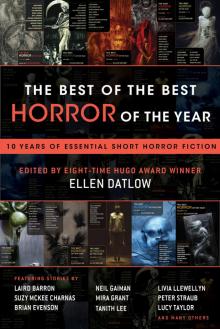 The Best of the Best Horror of the Year
The Best of the Best Horror of the Year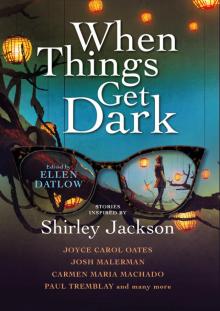 When Things Get Dark
When Things Get Dark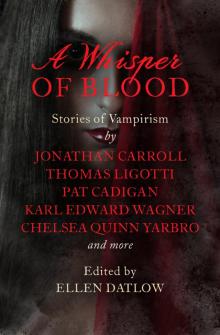 A Whisper of Blood
A Whisper of Blood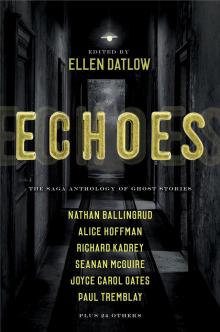 Echoes
Echoes Blood Is Not Enough
Blood Is Not Enough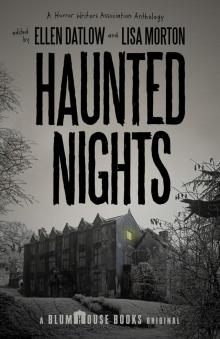 Haunted Nights
Haunted Nights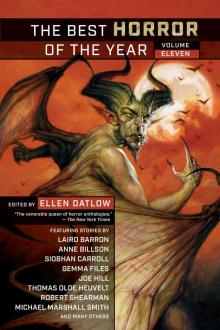 The Best Horror of the Year Volume Eleven
The Best Horror of the Year Volume Eleven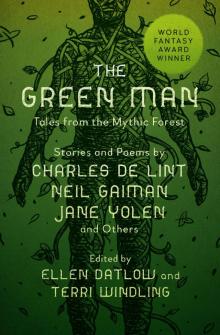 The Green Man
The Green Man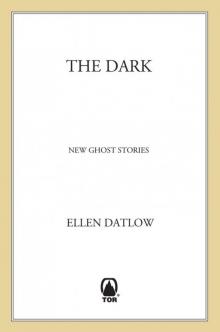 The Dark
The Dark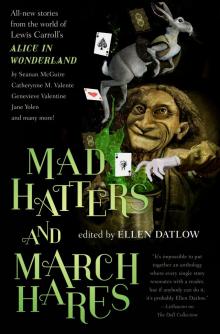 Mad Hatters and March Hares
Mad Hatters and March Hares Nebula Awards Showcase 2009
Nebula Awards Showcase 2009 The Devil and the Deep
The Devil and the Deep